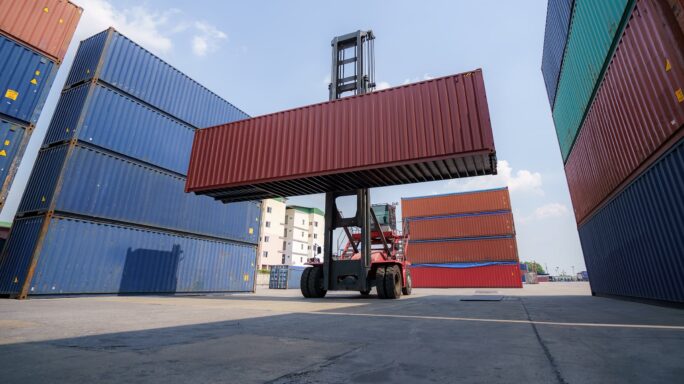Strategy, Legal & Operations
Just why are so many procurement teams seeking supply-chain sustainability software?

Sourcing Managers, Category Directors, Strategic Buyers, all names for those with their fingers on the purse strings to the sustainable supply chains everywhere. But can an (environmental) silk purse be made out of a sow’s ear?
Procurement departments can be instrumental in any organisation’s sustainability journey, from sourcing innovatively sustainable technology, and perhaps more pivotally, by taking accountability for the entire value chain’s sustainability. From raw materials to manufacturing and distribution (and logistics in between), discerning 1 source of truth across all purchasing categories is the golden thread for Procurement’s sewing.
If organisational net-zero is to be achieved, transparency at each level of the supply chain will be crucial. Without this, businesses will struggle to aggregate 1 “source of truth” for rich analysis into the key drivers for the triple bottom line: Profit, People and Planet. From extensive conversations across our client base, Sage Earth understands not just the challenge in obtaining sustainability data from suppliers but that from the suppliers’ suppliers to percolate sustainable behaviours throughout this whole web.
This single, coherent data-set enables Chief Procurement Officers to take snapshots of their entire supply networks at a holistic level, only to delve deeper into targeted areas for improvement. As ultimately, without this granularity, expecting behaviours to change is unrealistic. Indeed, organisations are waking up to the idea that baiting their purchasing power won’t have the same impact as creating network partnerships to collaborate with on crucial sustainability issues.
But before we look at how procurement professionals can go about doing this–let’s take a more in-depth look at why they even need to in the first place.
What problems could be solved with supply-chain sustainability software?
No matter how moral a business’s compass is, it still needs to head “due Profit”. And so, strategies for reaching net zero must be all-encompassing. If associated actions don’t include measuring and reporting progress, those businesses will be looking down the barrel of operational, regulatory and reputational risks. And if these risks aren’t subsequently accounted for, both costs and investors will run away altogether. If Procurement starts to engage with software constructing underlying data-sets, the business can conduct the analyses to futureproof themselves for the green economy.
Sustainable Operational-Risk Management
As net zero 2030 looms, robust processes and systems for measuring and monitoring sustainability factors within a company’s operations will be the obsoletion antidote. Careful analysis to understand the carbon emissions within raw materials, manufacturing, distribution, and interlocking logistics is a priority. Concurrently, a business needs to know how exposed they are to withstand hostile weather conditions, natural disasters, and labour market issues, to establish a demonstratable (environmentally-friendly) security of supply. To quantify these physical risks, methods of obtaining data from suppliers, suppliers’ suppliers, etc., is time-consuming, expensive, and often inaccurate. Research from Harvard Business School shows that compared to primary suppliers, “the practices of lower-tier suppliers are almost always worse, increasing companies’ exposure to serious financial, social, and environmental risks.” So, only looking at the operational risks from immediate suppliers is only to take 1 slice of the carbon pie.
Software helps make this process easier and frees up businesses to conduct a deeper layer of sustainability analysis. That is, how they as an organisation might influence suppliers’ behaviour through their own actions. Are short-notice changes in orders or unrealistic volume demands a contributor to the unsustainable business practices of some suppliers? Excessive labour overtime, inefficient energy consumption, and poor waste-management practices could all be down to the demand, with suppliers merely responding to its stresses.
Sustainable Regulatory-Risk Management
Few industry bodies aren’t laying down environmental regulatory gauntlets. Without comprehensive data sets to account for each supply stage, complying with these increasingly frequent and thorough disclosures proves incredibly difficult.
Better still, if procurement departments can get ahead of such requirements, they allow their organisations to take seats at the table with the legislators to steer appropriate obligations and benefit from best practice sharing (check out the Sustainable Procurement Pledge).
Sustainability-related Reputational Risks
Increasingly, environmentally-focussed consumers are voting with their feet—walking miles from the organisations without transparency concerning their supply chains. Sustainable Procurement permits a conversation with consumers. A company that can demonstrate positive measures in their supply networks being implemented now (even if the status quo is less than perfect) enables consumers to align their loyalty to organisations they wish to support long term.
Equally, fully understanding their network of contractors through sustainability supply-chain software can prevent PR crises such as those of Nike and Adidas (who were discovered to be using suppliers polluting waterways in China with toxic waste). Reputational risk doesn’t just run the risk of losing a customer base—but also interruptions in the value chain itself as new suppliers are scrambled to be found.
Financial Risk from unsustainable practices
The Chartered Institute for Procurement and Supply (CIPS) talks of whole life costing as significant analyses for procurement teams to assess how carbon-dense their supply chain is and where potential areas for financial risk lie. A multi-dimensional view such as this can enable sustainability issues to be brought to the forefront of decision-making, which historically had been plainly around cost. Further, if such analyses are possible, it can demonstrate hidden expenses which could surface later in the ownership of an asset or supplier relationship. This spotlight only stands to encourage not only greater efficiencies for the P&L but also greener long-term approaches for running the business—i.e. investment in clean-tech, improving working conditions, and collaborating with suppliers of all levels on long-term sustainability strategy.
Equally, the cost of carbon in many areas is still zero but is unlikely to prevail. This is resulting in hidden liabilities on balance sheets, causing concern for regulators and investors alike. Put crudely, if markets can’t understand your risk profile, they can’t price it, and if they can’t price it—they can’t invest in it.
Competitive Advantage from sustainable business activities
If a business can start to manage all of the above, they’ll create quite a headwind for their competitors not using sustainable supply-chain management.
But, perhaps counterintuitively to Michael Porter’s competitive advantage[1] rhetoric, collaborating with other businesses to hold sway with suppliers could provide the inertia for a more environmentally friendly world of Procurement to turn. It’s all very well to build a picture of how carbon-rich an operation is, but unless suppliers (who are likely also providing for competitors) are required to adhere to consistent sustainability standards, their ability to do so is reduced.
How software helps generate sustainable supply chains
We talk about how sustainable practices need to be embedded in every business area, and the only place that is accounted for is in the accounts. Linking procurement data to financial accounting is crucial.
Sage Earth is the single way of completing a robust carbon calculation that the whole supply chain can use, with no reliance on mature supplier-reporting systems or specific sustainability knowledge.
Our automated, standardised and straightforward method is the future of supply-chain emissions management.
Corporations need to rely on their supply chain to provide suitable information to be able to complete their emissions calculations. But getting hold of this data is expensive, messy, and often leads to inaccurate results.
“Supply chain decarbonisation is a ‘game changer’ in corporate climate strategy. By genuinely engaging with suppliers, it is possible to multiply your action several times over.” World Economic Forum report 2021.
Futureproof your business supply chain by acting today.
Did you know that Sage has a new Carbon Accounting software solution?
If you use either Sage Business Cloud Accounting or Sage 50, Sage Earth can help you better understand your business's environmental impact and guide you to net zero emissions.







Ask the author a question or share your advice